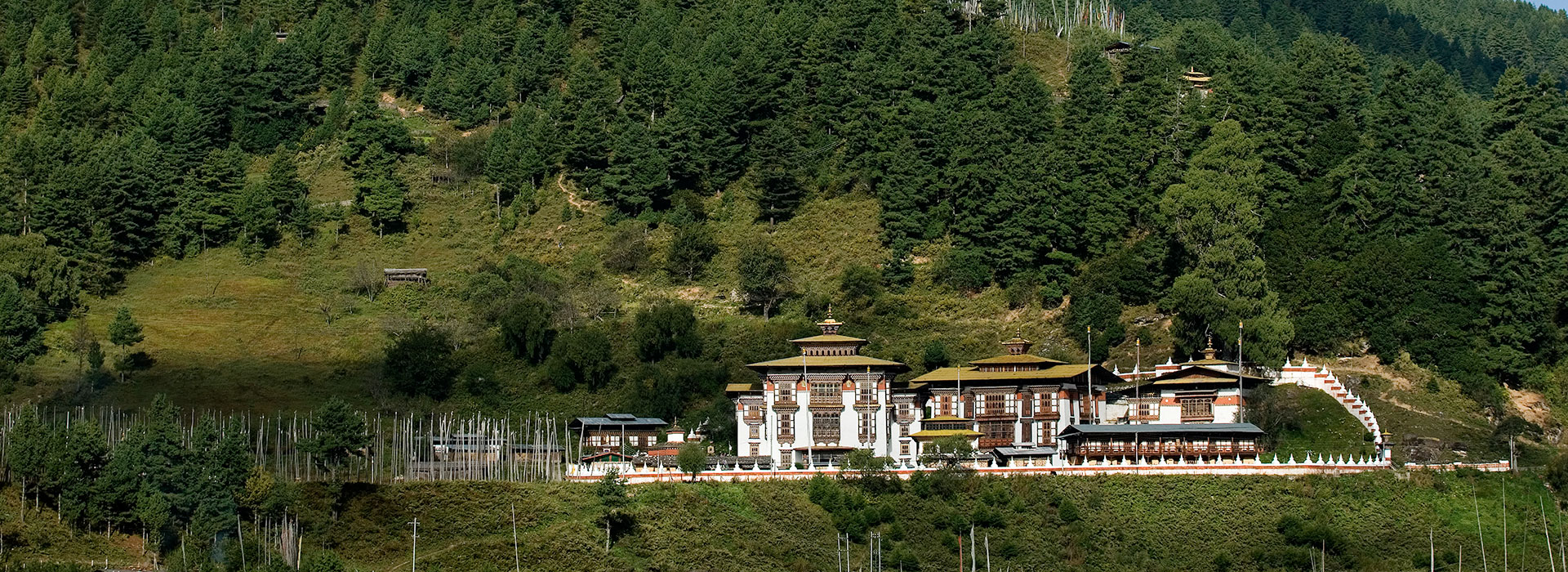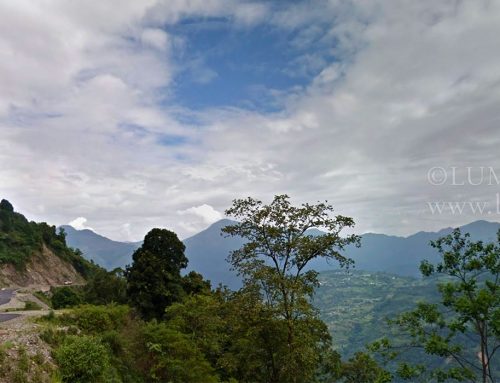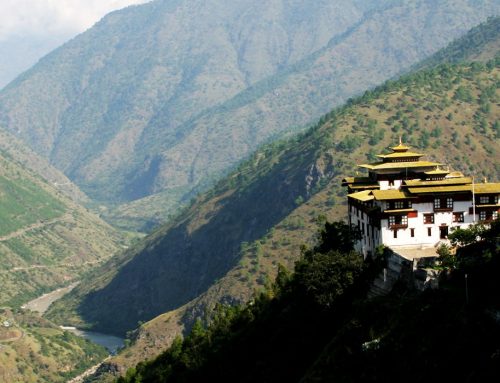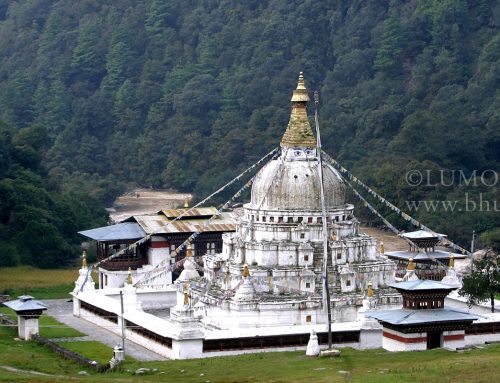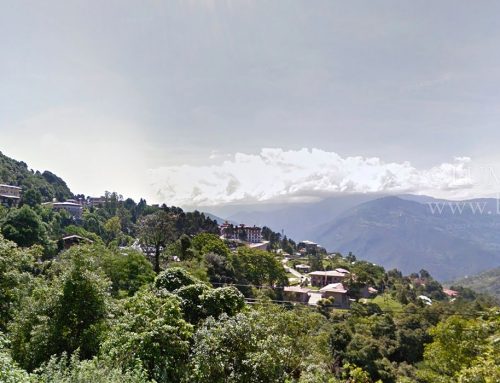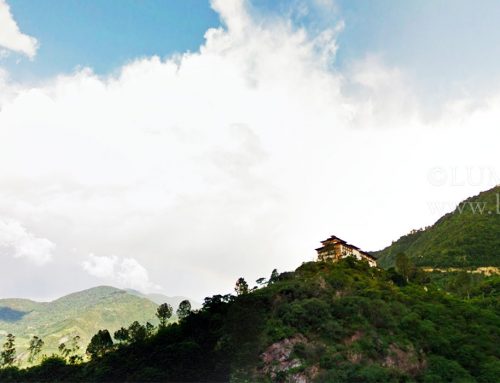Historically, Bumthang is the most important district (dzongkhag) in Bhutan. It’s is the cultural heartland of the country, home to some of the most ancient Buddhist sites. The district has four gewogs or administrative blocks: Chhoekhor, Chhume, Tang, and Ura.
The scenic valleys of Bumthang are famed for their natural beauty because of which the district attracts a large number of tourists each year. Tourists compare Bumthang to Switzerland for its low-lying valleys and pasturelands.
The district center is Jakar and over it sits the sprawling and sparkling Jakar Dzong – ‘Castle of the White Bird’. And a babbling river – Chamkhar Chhu- runs by the town. Apart from the Jakar Dzong (built in 1677), Bumthang also features the old Wangdichholing Palace built in 1857.
Built in 659 AD by Tibetan King Songtsen Gampo, Jampa Lhakhang is one of the oldest Buddhist temples in Bhutan. Another significant temple in the valley is Kurjey Lhakhang, an important place of pilgrimage. The temple was built around a rock on which Guru Padmasambhava left an imprint of his body while meditating there in the eighth century.
Bumthang is also known for the famous lake called Mebar Tsho or the Burning Lake in Tang where the great treasure revealer Terton Pema Lingpa discovered the sacred spiritual texts and relics hidden in the eighth century by Guru Padmasambhava.
The district has breweries, wineries, fruit and honey-based cottage industries, and the popular Swiss Dairy Farm. The regional cuisine includes buckwheat pancakes called Khuli and buckwheat noodles called Puta. Bumthang also produces Yathra, a handspun weave made of yak hair and sheep wool.
Places of Interest: Jakar Dzong, Wangdichholing Palace, Jampa Lhakhang, Kencho Sum Lhakhang, Lhodrak Kharchu Dratshang, Tak Rimochen, Kurje Lhakhang, Tharpaling Goemba, Tamzhing Lhakhang, Thukten Shedrup Dargay Choling Goemba, Mebar Tsho.


